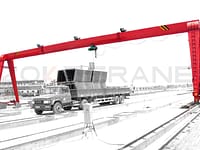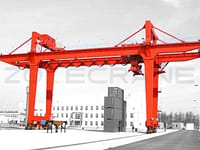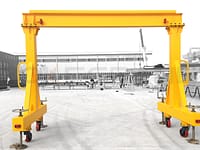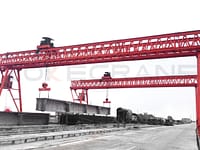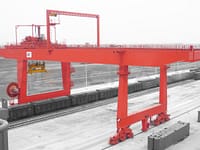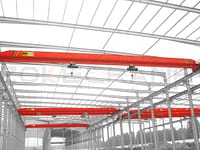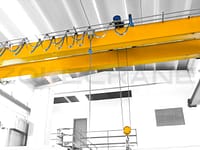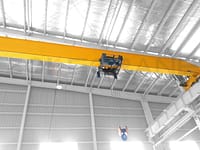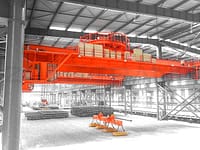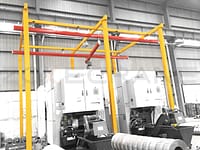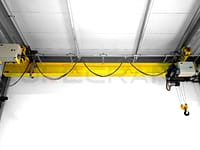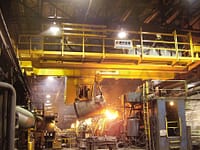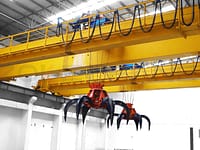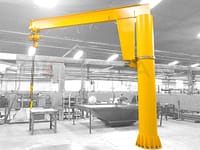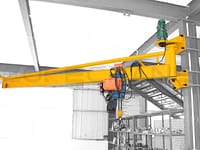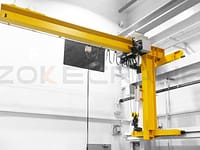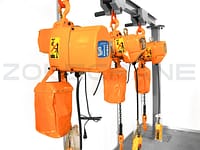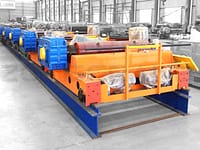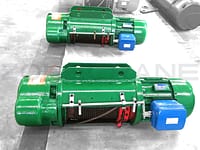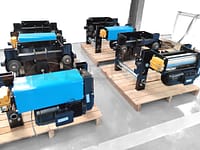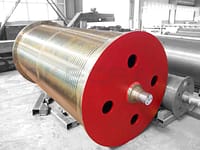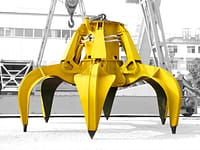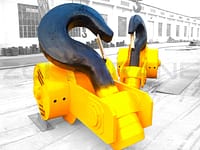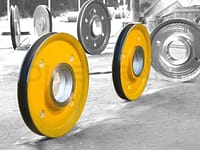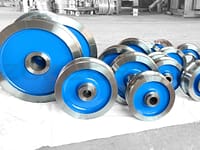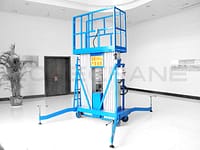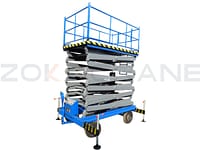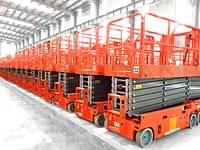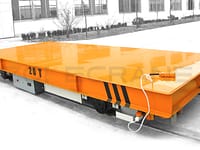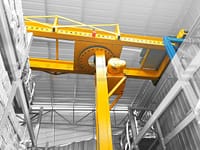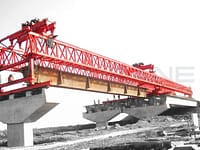Crane car or car in the running process, the wheel rim and track side contact, resulting in horizontal lateral thrust, causing friction and wear of the wheel rim and track. Crane wear track phenomenon manifested in various forms, sometimes only one wheel wear track, sometimes several wheels wear track at the same time, sometimes round-trip operation when the same side of the wear track, sometimes round-trip operation were gnawing wear track on both sides. The reason of wear track is very complicated, may be the track, wheels, bridge factors, may also be the influence of other factors. The following is a detailed analysis of the causes of the phenomenon of wear track.
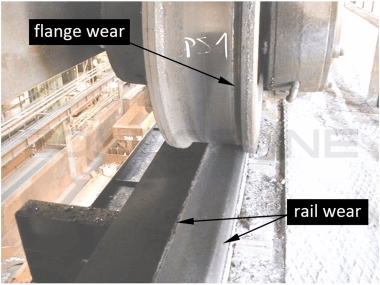
Wheel defects caused by wear track
Wheel manufacturing and installation quality problems can cause wear track. Crane long-term overload operation or due to residual stress and other reasons caused by the deformation of the main beam, end beam or trolley frame of the overhead crane, will cause the skew of the wheels and span changes, thus causing the operation of wear track, especially the most common in the large car.
- The diameter size of the two active wheel treads is not equal. When the overhead crane is running, the running speed of the left and right sides is different, causing the car to run off, making the wheel edge and the track on both sides of the forced contact, and cause wear track.
- When the installation or bridge deformation leads to four wheels not in the same plane, and the active wheel wheel pressure is not equal, wear track phenomenon is bound to occur.
- Wheel level deflection. Due to the deformation of the bridge, resulting in the horizontal bending of the end beam, so that the horizontal deflection of the wheels exceeds the difference or wheel installation has been horizontal deflection exceeds the difference, that is, the wheel width centerline and the track centerline form an angle α, the two active wheels deflected in the same direction, resulting in wear track.
- Wheel vertical deflection. The deformation of the bridge frame causes the wheel vertical deflection to exceed the difference, causing wear track. That is, the wheel tread centerline and the plumb line form an angle β. When the vertical deflection value of the active wheel end face exceeds the tolerance, it causes wear track because the two active wheels are deflected vertically in the same direction. After the overhead crane load, the two active wheels achieve unequal rolling radius, the wheel occurs wear track. Wheel vertical deflection, but also cause the wheel tread and the top surface of the rail contact area becomes smaller, the pressure per unit area increases, resulting in uneven wheel wear, and even in the tread wear grooves. This cause of wear track, overhead crane operation is often accompanied by hissing sound.
- The front and rear wheels do not run in the same straight line. Due to the installation or bridge deformation caused by the span or diagonal excess of the difference, so that the front and rear two wheels can not run in a straight line, causing wear track.
- The wheel taper direction installation error is bound to destroy the speed adjustment performance between the two wheels, making the wheels ahead more ahead, lagging wheels more lagging, that is, leading to a serious car body runaway and wear track phenomenon.
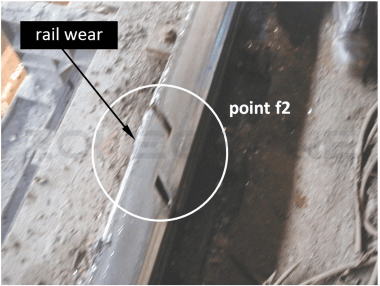
Track defects caused by the wear track
- Track installation level bending is too large or the local deformation of the track is too large, more than the span tolerance will cause wear track. This wear track is characterized by wear track only occurs in the track of the local or a section of the track.
- Track installation "figure of eight". Track installation is not standardized, resulting in one end of the track gauge is large, one end is small, the so-called track "eight-shaped". In this section of the track, the wheels run back and forth, will gnaw the outer and inner side of the track respectively.
- The same section of the two tracks relative elevation difference is too large. This situation can make the overhead crane in the operation of lateral movement, resulting in the higher side of the outer side of the track is gnawed, the lower side of the inner side of the track is gnawed.
- The track gauge is too poor. After processing and assembling according to the process requirements, the running wheel gauge of the overhead crane running mechanism is a fixed value, when the gauge for some reason leads to over-difference, which makes the wheel not run in the middle of the tread, thus causing the wheel edge and the side of the track to force contact, friction and wear track phenomenon.
- The main beam deformation causes the trolley track to produce side bend, when beyond a certain range, the trolley wheel will produce pinch track and cause wear track.
- The use of the process because of the pressure plate bolt loose or pressure plate without stopping back pad and lead to the track position movement, so that the gauge, parallelism, straightness, etc. exceed the poor, will occur when the phenomenon of wear track.
Other causes of wear and tear track
- Separately driven, because the motor is not synchronized will produce wear track phenomenon.
- Separate drive, due to the brake torque is not equal will produce wear track phenomenon.
- Because the drive shaft coupling gap is too large or too loose, the gear meshing gap is large and cause starting and braking asynchronous, will produce wear track phenomenon.
- The track or wheel has the dirt that affects the friction coefficient and causes the two active wheels to be driven differently, which will cause the wear track due to the car running out.
- After replacing an active wheel, resulting in two active wheel diameter difference is too large, causing the two wheels running line speed is not the same, causing the car body to run off the wear track.
